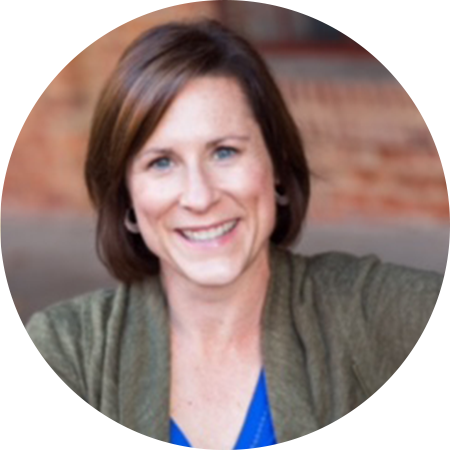During the COVID-19 pandemic, people spent a lot of time isolated and indoors, which helped foster an environment where some people now feel lonelier than ever. The result is a loss of social connectedness—the degree to which people feel the social connections and relationships in their lives to satisfy their wants and needs. When social…
Your Welcoa membership has expired.
Collaboration for Wellness Success
King Sisyphus, of Greek mythology, was punished by Zeus for tricking him. His punishment was to roll a huge boulder up a steep hill repeatedly. To make it worse, Zeus would make the boulder roll away from Sisyphus when he neared the top of the hill. Sisyphus worked hard every day but didn’t accomplish anything, leading to unending frustration.
This story got me thinking about our roles as wellness professionals. Our jobs can feel like we’re endlessly rolling a boulder up a hill all by ourselves. We often feel like wellness is our sole responsibility and we have to own every piece of it. We’re not only trying to get employees excited about improving their health but we’re aiming to get leaders and decision makers to “buy into” wellness.
For our success (and sanity) we have to shift our thinking from sole boulder roller to collaborator. We don’t have to—and shouldn’t—go at it alone.
Collaboration is exemplified in WELCOA’s Definition of Wellness. This definition allows us to explore and reach into new areas with which we aren’t as familiar, such as meaning, achievement, and growth. Let’s take growth for example. Growth is feeling like you are progressing in your career and learning and being challenged to use and expand on your strengths. How can growth be part of wellness without us collaborating with managers, other areas of HR and employees themselves? The reality is that it can’t.
Here’s the good news—we don’t need to own every part of wellness or to be the expert in everything. To successfully deliver a holistic approach to wellness, we DO need to work with and rely on other people. Collaborating across our organizations helps us expand our knowledge, get more connected to business strategies, exposes us to different perspectives and helps us understand organizational priorities.
To address collaboration, our first approach is often forming a wellness committee or group of ambassadors. This is a great first step towards collaboration, but we often stick to the formal meetings and a focused wellness agenda. To collaborate outside of formal committee meetings, consider if your members can introduce you to teams, people and departments you don’t know.
For example, at a recent Ambassador meeting I held, I mentioned that I can work with individual teams on a variety of topics—stress and resilience being one of them. One of the Ambassadors, Pam, brought up my offer to her direct reports who lead customer service teams. When they expressed interest in training, Pam also spoke with her Executive to keep her in the loop (don’t underestimate office politics). As a result, the managers invited me to facilitate a resilience training for their department. Ultimately, I was able to connect a wellness offering to a department/business need.
Another way to collaborate is within HR. Alli Cromartie, Global Wellness Leader for Ingersoll Rand, has a diverse group of well-being champions who are volunteers. While she was able to provide small appreciation gifts every year, she felt like something was missing. So, she worked with her internal Talent team to think through the core competencies that every employee has to report on globally. Out of seven identified core competencies, they selected two that could apply to her champions. Now by becoming a well-being champion, they can build these core competencies and add this “volunteer” role to both their development plans and goal setting.
But what if you don’t have a formal wellness committee? Don’t worry—there are countless opportunities to build connections and relationships across your organization. Here are some strategies to consider:
- Go to where employees already assemble. You can bring your wellness resources to where employees and leaders already meet. Think department meetings, employee networks and Town Halls.
- Meet with leaders and get to know what’s important to them. Ask questions with genuine curiosity. Start with the questiob—“what’s important for you to achieve this month/quarter/year?” and a follow up question could be “what are your challenges to achieving it?”. You may need to practice your questions. If you find one questions doesn’t work, tweak it and try again.
- Connect with groups, projects and initiatives that naturally tie in with wellness. Some natural opportunities are leadership development, diversity and inclusion and safety.
Henry Ford said it best – “If everyone is moving forward together, then success takes care of itself.” Wellness is not your sole responsibility. Leverage the power of collaboration—not just for your success, but to elevate the value proposition of wellness.
WELCOA’s Definition of Wellness
Benchmark 2 Toolkit
Exploring the Power of Community

Jen Arnold, PHD, MS, RD-LDN //
Owner • Redesigning Wellness, Inc.
Jen Arnold is the host of the Redesigning Wellness podcast where she has interviewed 160 experts (and counting) on the topic of organizational health. She’s on a mission to change the common approach to employee health and wellness through training, speaking and honest conversations. You can learn more about her company at redesigningwellness.com. If you want to learn how to increase the value proposition of wellness through building relationships and collaboration, check out Redesigning Wellness Academy.
Want to understand how you are currently doing and how you can improve collaboration for wellness? Take the Well Workplace Checklist! You’ll get scores and resources to address collaboration for wellness—wellness teams and beyond!




